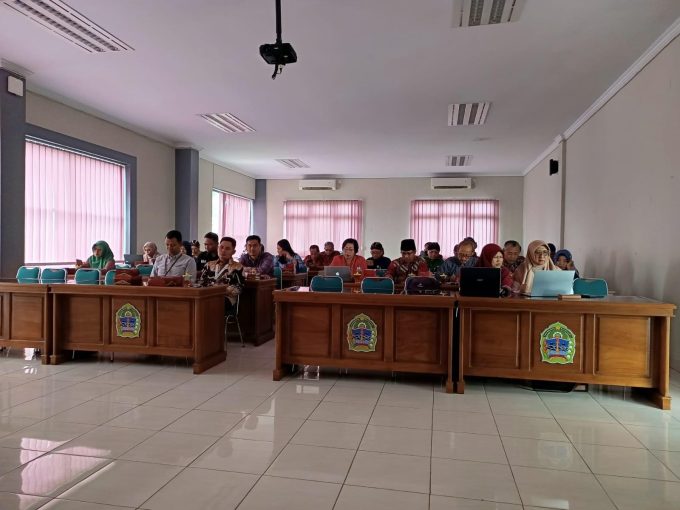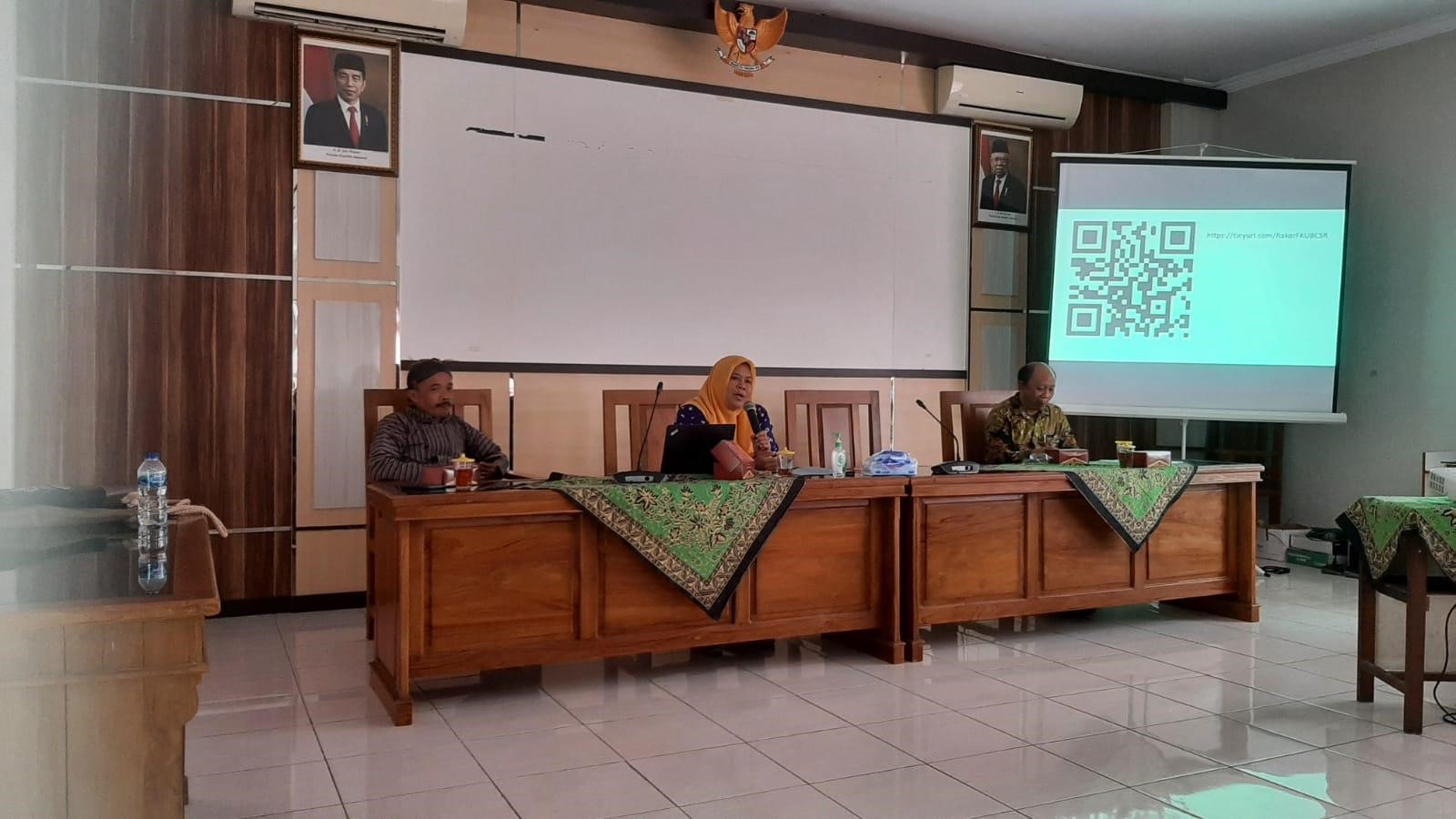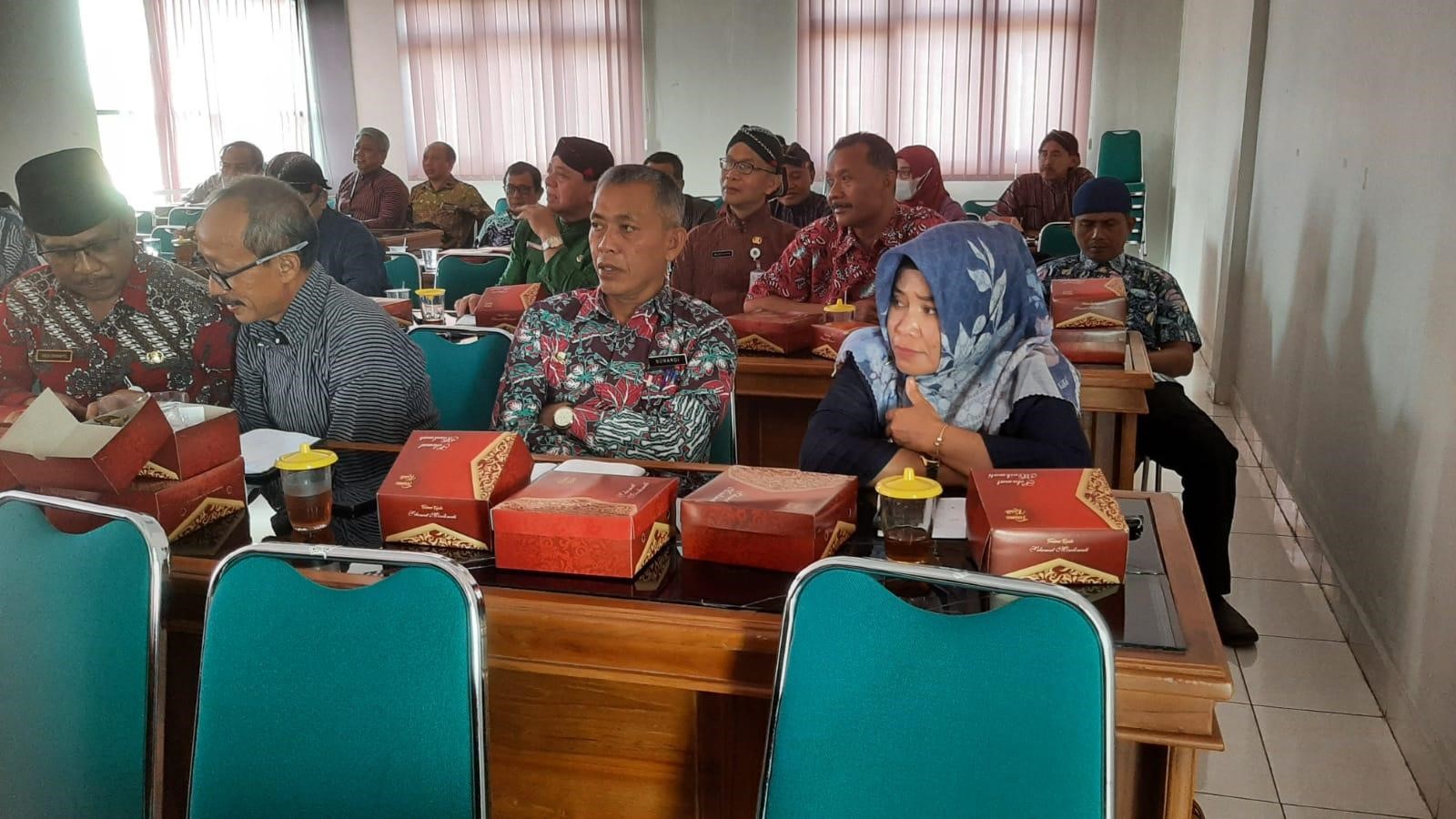
Yogyakarta (29/8), a lecturer at the Population Master and Doctoral Program at the Graduate School of Gadjah Mada University (SPs UGM),contributed to Community Service (PkM) activities which are one of the pillars of the tridharma of higher education. Represented by Dr. Umi Listyaningsih, S.Sc., M.Sc. and Dr. Sri Rahayu Budiani, S.Si., M.Sc. as a resource person. The PkM was implemented at the Community and Subdistrict Empowerment, Population Control and Family Planning Office of Gunungkidul Regency in the activity “Religious Community Forum Coordination Meeting and Convergence for the Acceleration of Stunting Reduction”.
This activity was attended by stakeholder officials, NGOs and initiators in the Gunungkidul Regency area. The focus of implementing this activity is the legal basis for presidential regulations and BKKBN regulations regarding plans to accelerate stunting reduction in Indonesia that are holistic, integrative and of high quality through coordination, synergy and synchronization between stakeholders.
Drs. Sujarwo, M.Si, Chief of the Gunungkidul Regency DPMKP2KB Service said that the results of the intervention in June 2024 which was carried out simultaneously throughout DIY targeting toddlers showed that Gunungkidul had the highest trend of 17.02% stunting rate and exceeded the national target of 14%. This is a serious problem that must be paid attention to by all parties, both society and the government.
“The stunting prevention program is the focus of many OPDs and local government partnerships, but why is stunting not decreasing? One thing that needs attention is the measuring height, length and weight is not easy and is prone to error. Equipment calibration, the quality of human resources and the community need to be considered to obtain valid and reliable data. The risk of stunting is different from the prevalence of stunting. “The relationship between these two variables needs to be seen by paying attention to demographic and landscape variables,” said Umi Listyaningsih when giving a presentation at the meeting.
The government and society are working together to overcome this problem with the emergence of various innovative strategies in handling stunting. The innovation carried out was the development and update of the SIGAMONIPUS application which was initiated by Ipekabe, Rongkop Regency. There are various community movements such as RAFATAR (Focused Movement to Overcome Adolescent Anemia) which was initiated by the Gedangsari II Community Health Center and Gething Padu Reti Setia (Integrated Movement to Prevent Stunting Starting from Healthy Young Women Without Anemia) and initiated by the Tepus I Community Health Center.
Tags: stunting, tridharma, community service, innovation and strategy, Gunungkidul, SDG 1: no poverty, SDG 2: no hunger, SDG 3: healthy and prosperous life, SDG 4: quality education, SDG 9: industry, innovation and infrastructure , SDG 17: partnerships to achieve the goal
Author: Siti Muyasaroh



